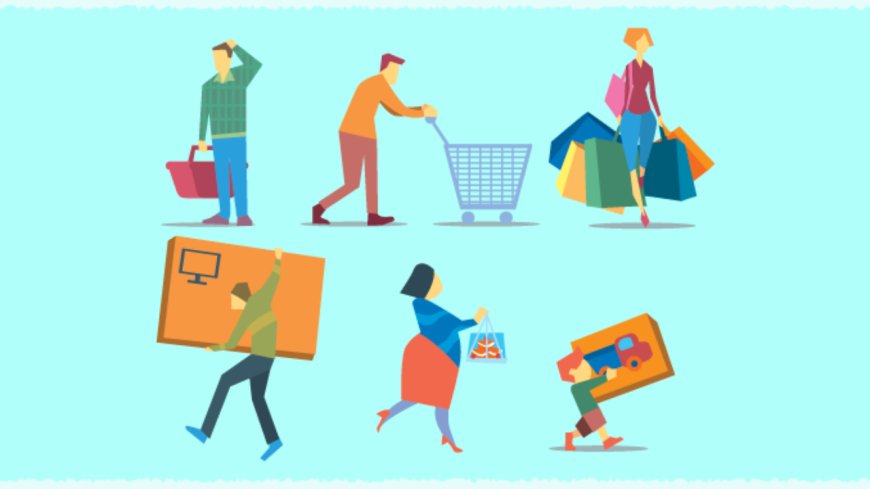The Psychology Behind Impulse Buying: Understanding Consumer Behavior
The Psychology Behind Impulse Buying: Understanding Consumer Behavior

Impulse buying is a phenomenon that affects many consumers, often leading to unplanned purchases. Understanding the psychology behind impulse buying can help businesses tailor their marketing strategies and consumers become more aware of their spending habits. This article explores the factors that drive impulse buying and how businesses can leverage this behavior to their advantage.
What is Impulse Buying?
Impulse buying refers to the spontaneous, unplanned decision to purchase a product or service. This behavior is often triggered by emotions and environmental cues rather than rational decision-making processes. Impulse purchases are typically made on the spur of the moment without prior intention.
Psychological Triggers of Impulse Buying
1. Emotional Responses
Emotions play a significant role in impulse buying. Feelings of happiness, excitement, or even stress can lead individuals to make spontaneous purchases as a way to enhance their mood or cope with negative emotions.
2. Instant Gratification
The desire for instant gratification is a powerful motivator. Consumers often make impulse buys to quickly satisfy a need or want, leading to a sense of immediate pleasure and reward.
3. Social Influence
Social factors, such as peer pressure and social norms, can drive impulse buying. Seeing others purchase items, especially friends or influencers, can create a sense of urgency and a desire to conform.
4. Marketing and Advertising
Effective marketing strategies and advertising can trigger impulse buying. Eye-catching displays, limited-time offers, and persuasive messaging can entice consumers to make quick decisions.
5. Product Placement and Store Layout
The strategic placement of products and the overall store layout can influence impulse purchases. Items placed near checkout counters or at eye level are more likely to be bought on impulse.
How Businesses Leverage Impulse Buying
1. Creating Urgency
Businesses often use scarcity tactics, such as limited-time offers or low-stock notifications, to create a sense of urgency. This encourages consumers to make quick decisions to avoid missing out.
2. Appealing to Emotions
Marketing campaigns that evoke strong emotional responses are more likely to trigger impulse buys. Advertisements that tell a compelling story or highlight the emotional benefits of a product can be particularly effective.
3. Strategic Product Placement
Placing high-margin items in prominent locations within a store can increase the likelihood of impulse purchases. This includes positioning products near checkout areas or at the front of the store.
4. Offering Small, Inexpensive Items
Low-cost items placed in high-traffic areas can attract impulse buyers. These items are often seen as low-risk purchases, making consumers more likely to add them to their carts.
5. Providing Easy Checkout Options
Simplifying the checkout process can reduce friction and encourage impulse buying. Features such as one-click purchasing, mobile payments, and seamless online checkout experiences can lead to more spontaneous purchases.
Tips for Consumers to Manage Impulse Buying
1. Create a Shopping List
Having a shopping list can help consumers stay focused on what they need and avoid unnecessary purchases.
2. Set a Budget
Establishing a budget for shopping trips can provide a clear spending limit, reducing the likelihood of impulse buys.
3. Pause and Reflect
Taking a moment to consider the necessity of a purchase can help consumers make more rational decisions. Waiting 24 hours before making a purchase can also reduce impulse buying.
4. Avoid Shopping When Emotional
Shopping while experiencing strong emotions can lead to impulsive decisions. It's best to shop when feeling calm and composed.
5. Unsubscribe from Promotional Emails
Reducing exposure to marketing emails and advertisements can minimize the temptation to make impulse purchases.
Conclusion
Impulse buying is driven by a combination of emotional, social, and environmental factors. By understanding the psychology behind this behavior, businesses can create effective marketing strategies that capitalize on consumers' spontaneous tendencies. At the same time, consumers can adopt strategies to manage impulse buying, ensuring more mindful and deliberate spending habits.
What's Your Reaction?















































































